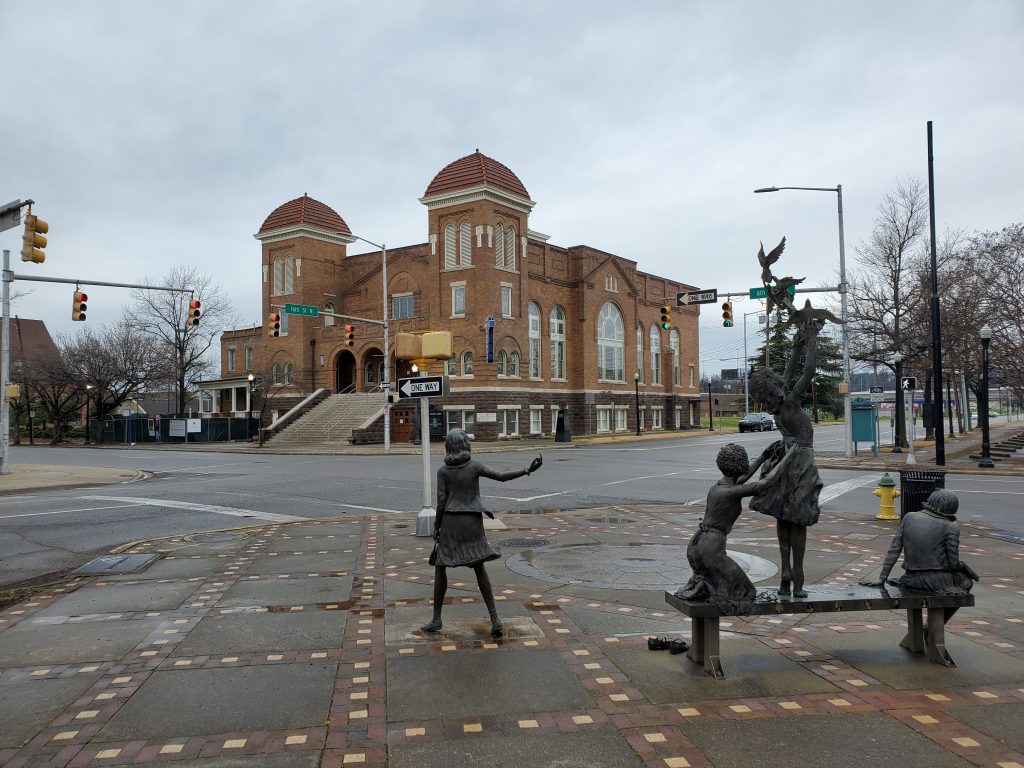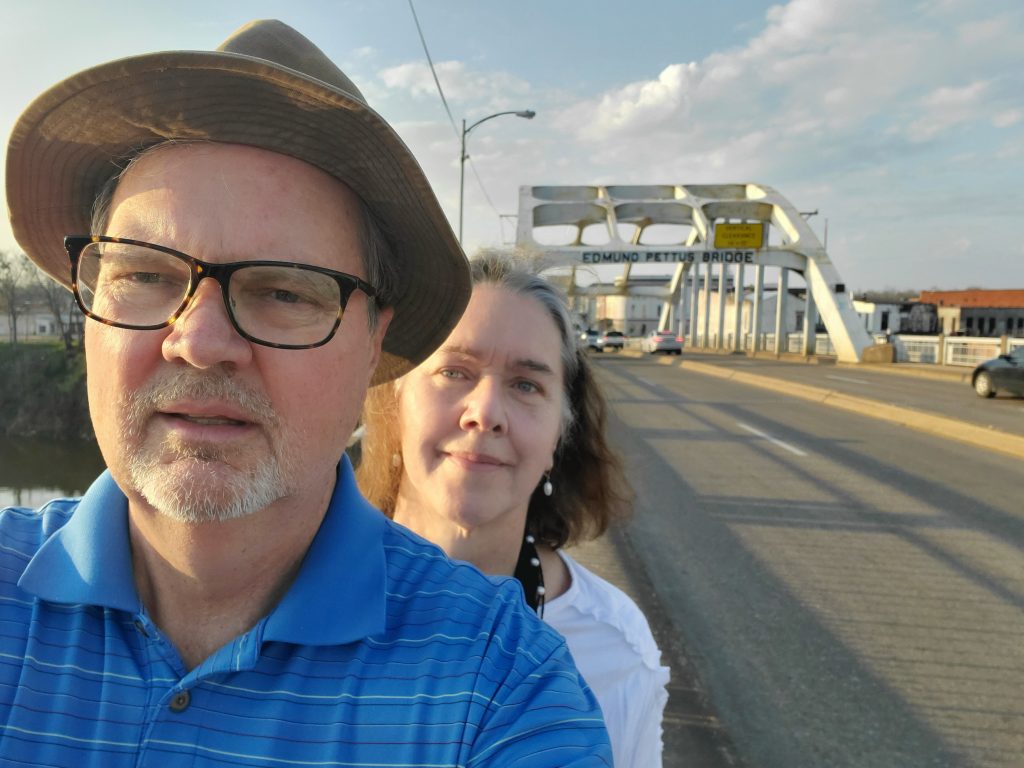
My eighty-seven-year-old mother is an incredible gardener. Until she gave up her own home in rural Maryland and moved in with my husband and me in McLean (just on the edge of Tysons), she had an exceptionally large vegetable and flower garden that my siblings and I loved to raid each summer and the grandkids loved to explore. Once Mom moved to McLean, we just had to continue the tradition. Brothers were enlisted to help build several raised garden beds in our back yard. Since then, Mom and I have been successfully raising lettuce, spinach, Swiss chard, kale, arugula, beets, tomatoes, peppers, green beans, jalapenos, apple mint, basil, parsley, and other herbs. Not only does it help with grocery bills, but the food is delicious. We both enjoy being out of doors and working in the yard. It can be a workout, and watching God’s amazing variety of vegetation grow is a real joy.
Not everyone lives in a situation where there is room for backyard beds, but there are other ways to garden for those who might be interested. You can start small – just a few pots. Also, the Fairfax County Park Authority rents more than 650 garden plots in nine county parks on an annual basis to Fairfax County residents. Information about this program can be found by visiting https://www.fairfaxcounty.gov/parks/green-spring/plots
If you think you, your family, friends, work colleagues or spiritual community are interested in starting your own community garden, Fairfax County also provides these resources: https://www.fairfaxcounty.gov/topics/community-gardening and https://www.fairfaxcounty.gov/food-council/urban-agriculture/edible-gardens-resources.
Local non-profits, such as SHARE and Food for Others, are happy to receive donations from community gardens. Information about Food for Others’ Farm to Family program can be found at: https://www.foodforothers.org/farm-to-family-program. The link to SHARE’s produce donation program can be found at shareofmclean.org/community-garden (The SHARE program is on hiatus during the pandemic.)
For home gardeners who may be interested in sprucing up their landscape and learning about native plants, a great place to visit is Green Spring Gardens, a national historic site, museum, and outdoor classroom. https://www.fairfaxcounty.gov/parks/green-spring. Also, there is the nearby Meadowlark Botanical Gardens. https://www.novaparks.com/parks/meadowlark-botanical-gardens.
Finally, if you are looking for an opportunity to be out-of-doors and experience beautiful gardens, check out Virginia Historic Gardens Week. This is an annual event sponsored by the Garden Club of Virginia. This year it runs April 17 – 24. Tours of private landscapes, public gardens, and historic sites are offered by local member clubs throughout the Commonwealth. Tickets are required and available for purchase at https://www.vagardenweek.org/.
Happy gardening!
This blog post is the expressed opinion of its writer and does not necessarily reflect the views of Tysons Interfaith or its members

Just about every spiritual path celebrates spring in a special way. For those of us who follow the Sikh way of life, in spring, we celebrate our most auspicious holiday, called Baisakhi. This year, Baisakhi is celebrated on April 13th.
The Sikh way of life was established by ten successive Sikh Gurus in India. Each of them was a pure channel of God’s love and wisdom. They inspired people to live lives of devotion, service and joy – to live in God-consciousness. “Sikh” means “student of Truth.” Guru Gobind Singh Ji was the tenth Sikh Guru in human form.
In mid-April, 1699, at the spring festival called Baisakhi, Guru Gobind Singh Ji initiated a special baptism of the most devoted Sikhs, in which he prepared and served a divine nectar called Amrit. Through this baptism, the deeply devoted Sikhs became Khalsa, or pure ones. After the Guru baptized the first five Khalsa, he had them baptize him as well. Guru Gobind Singh Ji declared that whenever five Khalsa gather in his name, he would be there with them.
Baisakhi is the highest celebration for Sikhs. It is a time of rededication and renewal of our faith. Many people take part in this special baptism to become Khalsa at this blessed time of year.
This blog post is the expressed opinion of its writer and does not necessarily reflect the views of Tysons Interfaith or its members.
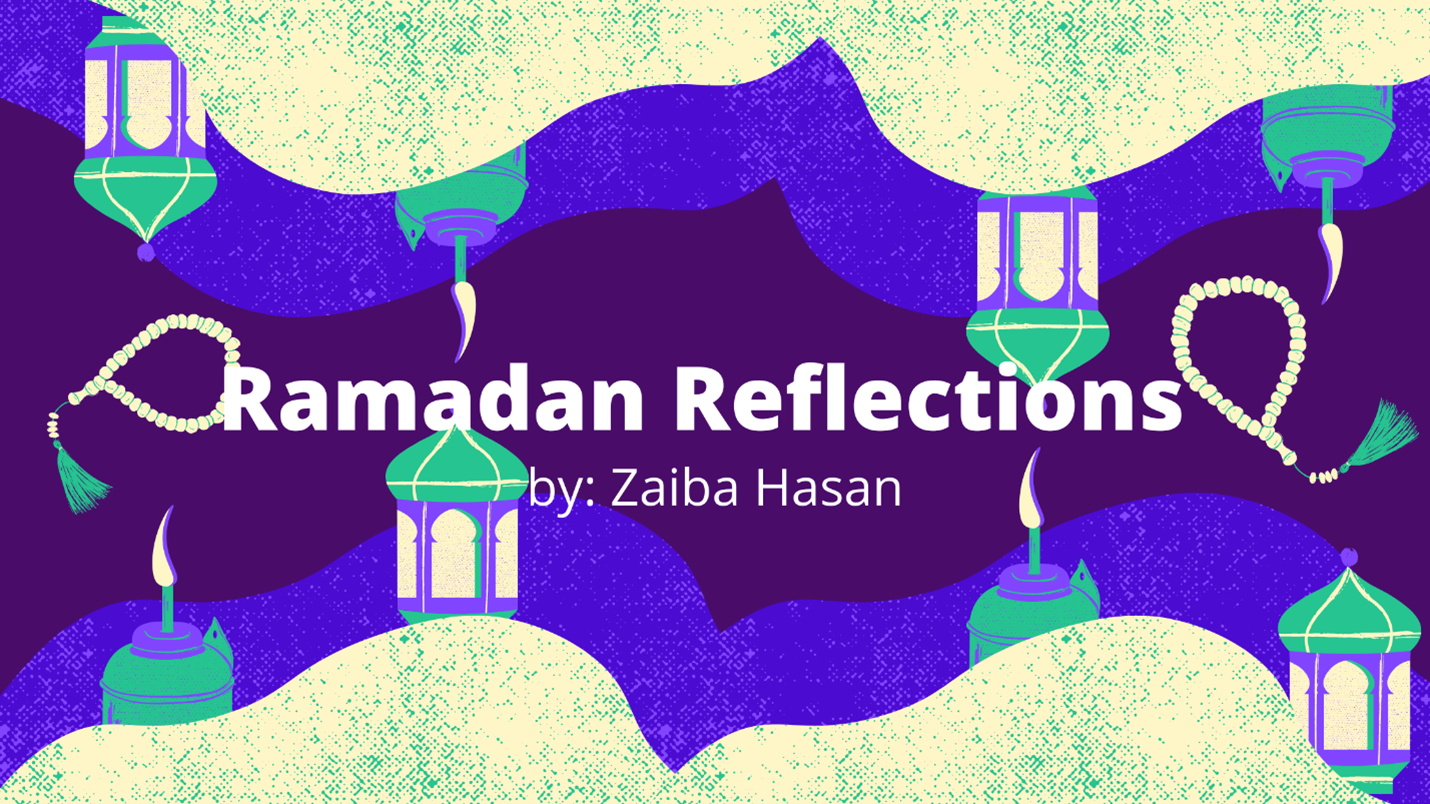
Monday, April 12th, 2021 marks the ninth month in the Islamic calendar when for thirty days, over 3.5 million American Muslims will fast and “yes, even forego water.” Ramadan for Muslims world-wide not only is one of our five pillars[1] or religious tenets, it is also an opportunity to reset, renew, and rejuvenate your spiritual connection to God (Allah) and use the physical pangs of abstinence, hunger, thirst during the daylight[2] hours as a tangible reminder of your spiritual connection to something bigger than your body’s physical needs. However, as a religious minority it is often harder for us to do this. Living in a non-Muslim community means that we are squeezing in prayers between work meetings, breaking your fast at your son’s baseball games, or “listening” to the Quran[3], at stoplights while rushing to your next appointment. Not necessarily conducive to that whole spiritual awakening we are supposed to be experiencing. For our family, knowing that we cannot stop our every-day lives to dedicate it solely to religious practices, we try to fit in the intent behind Ramadan in a more practical application whenever we can.
Charity: As one of the main five tenets fitting in additional charitable efforts during this month can be a welcomed experience to all. After supporting our local Mosque, our family usually chooses a few charities to support either financially or with our physical time. In volunteering we are taking the meaning behind this month of connection to reconnect with ourselves as a family and to connect with the community as well. (Note: we are supporting St. Jude Children’s Research Hospital and you all are invited to our virtual iftar.)
Interfaith: My personal philosophy has always been that we are more alike than different, and in celebrating our differences we can view them as a rich opportunity for learning and growth. We are bridging that gap of misunderstanding one smile, one greeting at a time and potentially creating a village of allies that we all need during these rocky times. Use this month as an opportunity to take a treat to your neighbor, read a Ramadan book to your child’s class, write a blog in your local community. Make our presence known because it is a lot harder to hate when there is a person sharing their samosas with you.
Reflection: In using the momentum of Ramadan as a springboard to further reflection. How can we continue doing good works for a local community? How can we make small changes of understanding to further close the gap of misunderstanding? How can we as a family come together and with our own hands help the hungry, care for our neighbor, reconnect with God (Allah) in a way that is more meaningful than rushed prayers in between activities?
Maybe celebrating Ramadan here is not as easy as it would be in a Muslim country. However, I would argue that it is more meaningful. We as a Muslim community must work that much harder to implement and institute our religious traditions in a non-Muslim country. In making space for ourselves now, we are also making space for others that come behind us. If that is not in the spirit of Ramadan than I don’t know what else is.
Until Next Time,
This blog post is the expressed opinion of its writer and does not necessarily reflect the views of Tysons Interfaith or its members.
[1] Shahada (profession of faith), Salat (prayer), Zakat (charity), Saum (Fasting), Hajj (pilgrimage)
[2] Muslims refrain from food, water, and sexual relations from sunrise to sunset.
[3] Muslims holy text

In a recent Lenten reflection session at St. Thomas Episcopal, we talked about prayer, using as our starting point the Lord’s Prayer, which is well-known even in our secular culture.
Noting how reciting the same words over and over can become stale, one person shared how they had been deeply moved when they used an alternate version that can be found in the New Zealand Prayer Book. https://anglicanprayerbook.nz/167.
The new translation forced them to focus on the meaning of the original text. Looking up this version, I was also struck by how the non-traditional perspective adds power and universality to the prayer, and I commend it to you.
“Eternal Spirit, Earth-maker, Pain-bearer, Life-giver,
Source of all that is and that shall be,
Father and Mother of us all,
Loving God, in whom is heaven:
The hallowing of your name echo through the universe!
The way of your justice be followed by the peoples of the world!
Your heavenly will be done by all created beings!
Your commonwealth of peace and freedom sustain our hope and come on earth.
With the bread we need for today, feed us.
In the hurts we absorb from one another, forgive us.
In times of temptation and test, strengthen us.
From trials too great to endure, spare us.
From the grip of all that is evil, free us.
For you reign in the glory of the power that is love,
now and forever. Amen.”

For Christians, we are about to enter the holiest week of the Christian year, aptly known as Holy Week. During Holy Week, Christians mark the events that took place in the last week of Jesus’ life. We begin with his triumphal entry into Jerusalem at the head of a peasant parade hailing his arrival. As the week progresses, we gather with Jesus and his disciples for the meal commonly known as the Last Supper. We watch in horror as Jesus is betrayed, arrested, tortured and then crucified. We sit in anguish with his friends in the midst of their shock and horror at Jesus’ death. And finally, we celebrate the miracle of resurrection and new life at the empty tomb on Easter Sunday.
We begin on Palm Sunday (March 28th, this year). On Palm Sunday, we remember Jesus’ return to Jerusalem. John Dominic Crossan and Marcus Borg have described Palm Sunday as a day of two processions. They write:
One was a peasant procession, the other an imperial procession. From the east, Jesus road a donkey down the Mount of Olives, cheered by his followers. Jesus was from the peasant village of Nazareth, his message was about the kingdom of God, and his followers came from the peasant class. They had journeyed to Jerusalem from Galilee, about a hundred miles to the north, a journey that is the central section and the central dynamic of Mark’s gospel. Mark’s story of Jesus and the kingdom of God has been aiming for Jerusalem, pointing toward Jerusalem. It has now arrived. On the opposite side of the city, from the west, Pontius Pilate, the Roman governor of Idumea, Judea, and Samaria, entered Jerusalem at the head of a column of imperial cavalry and soldiers. Jesus’s procession proclaimed the kingdom of God; Pilate’s proclaimed the power of empire. The two processions embody the central conflict of the week that led to Jesus’ crucifixion. [1]
Pre-pandemic, many churches distribute palm branches to those who gather for worship. We wave our palm branches and declare, “Hosanna! Blessed is the one who comes in the name of the Lord.” This year, in the midst of the ongoing pandemic, churches are worshiping in a variety of ways. At St. Thomas, we’ll gather outside on Saturday evening and over Zoom on Sunday morning. Parishioners have been invited to pick up palm branches at church before the Sunday morning service.
In our individual devotions during Holy Week, many Christians read from John’s Gospel about the events that happen after Jesus’ triumphal entry. On Monday, we read John 11: 1-12. On Tuesday, we read John 12: 20-36. And on Wednesday, we read John 13: 21-32.
This brings us to Maundy Thursday (this year, April 1). Maundy Thursday remembers the last supper that Jesus ate with his friends before his death. The day gets its name from the Latin word mandatum or mandate. It comes from Jesus’ command (mandate) that his followers, “love one another as I have loved you.” You can read the whole of the Maundy Thursday story here.
One of the key moments on Maundy Thursday is when Jesus does something quite unexpected for a great teacher. Before Jesus and his companions gather to eat, Jesus wraps a towel around his waist and washes his disciples’ feet. Normally this task would have been done by a servant. Instead, Jesus humbles himself to take on this role – and teaches every Christian the key role that service to others plays in the Christian life.
Good Friday (this year, April 2) remembers the day that Jesus was crucified. It’s probably the most somber day in the Christian year. It seems counterintuitive to call a day that was filled with torture, suffering and death “good.” But Christians believe that Jesus’ death on the cross is ultimately a repudiation of death, evil, and sin. Worship on this day is somber and reflective. We pray. We contemplate the cross. And we share in the sorrow of Jesus’ death (even as we know what his first followers did not – that resurrection is coming).
On Holy Saturday morning (this year, April 3), Christians sit with the grief of Jesus’ death. Again, we know that Resurrection is coming, but has not yet arrived. Many Christians read of Jesus burial by Joseph of Arimathea in Matthew’s Gospel.
As the sun sets on Holy Saturday, Christians gather for what is known as the Great Vigil of Easter. From the earliest days of the Christian Church, Christians would gather in the dark on the night before Easter. A new fire is kindled, and an ancient hymn called the Exsultet, which sings of God’s glory would be sung. They would tell the stories of God’s saving acts in history – how God has always acted for justice and new life. Those who have been preparing for baptism were baptized. And as the sun rose on Easter morning, the first call and response of, “Alleluia, the Lord is risen! The Lord is risen indeed, Alleluia!” is heard. Most churches that celebrate an Easter Vigil now, begin at sunset, though I have participated in an Easter vigil that began in the dark at 4am on Easter Sunday.
Finally, on Easter Sunday (this year, April 4), we celebrate the unthinkable news that Jesus has been raised from the dead. Each of the Gospels (Matthew, Mark, Luke and John) tells the story a little differently, but they share remarkable consistency. And while there was no video camera to tell the story of how the resurrection occurred, we can see its truth in the transformation of Jesus’ first followers. In the coming days and weeks, they’ll undergo a profound transformation. They move from being frightened deniers of Jesus (like Peter after Jesus arrest) who are afraid and locked away (see John 20: 19-31) to fearless evangelists for the way of Jesus Christ (see Acts 2: 1-21).
The span of these eight days that stretch from Palm Sunday to Easter Sunday are truly my favorite days of the Christian year. In them, we walk a road that includes hope, community, betrayal, death and new life. If you’d like to learn more or experience one or more of these services, you are welcome to join us at St. Thomas Episcopal Church in McLean (via Zoom – links will be on our website on Monday March 29) or any of the Christian churches that are part of Tysons Interfaith. Click on the logos here to be connected to the congregation’s website.
.
[1] Marcus Borg and John Dominic Crossan, The Last Week: What the Gospels Really Teach About Jesus’s Final Days in Jerusalem (New York: HarperCollins, 2006), pp. 2-3.

In our Torah (the scroll with the first five books of the Bible penned by hand in Hebrew), one of the most important ideas is freedom. This includes the story of Passover, which begins in ancient times with Abraham, the first person to have the idea that maybe all of those little statues his contemporaries worshipped as gods were just statues. The idea of one God, invisible and all-powerful, inspired him to leave his family and begin a new people in Canaan, the land that would one day bare his grandson Jacob’s adopted name, Israel.
God made a promise to Abraham that his family would become a great nation, but this promise came with a frightening vision of the troubles along the way. “Your descendants will dwell for a time in a land that is not their own, and they will be enslaved and afflicted for four hundred years, however, I will punish the nation that enslaved them, and afterwards they shall leave with great wealth.”
In the years our ancestors lived in Egypt, our numbers grew, and soon the family of Jacob became the People of Israel. Pharaoh and the leaders of Egypt grew alarmed by this great nation growing within their borders, so they enslaved the Israelites. The Israelites were forced to perform backbreaking labor. The Egyptians feared that even as slaves, the Israelites might grow strong and rebel. So Pharaoh decreed that Israelite baby boys should be drowned to prevent Israelites from overthrowing those who had enslaved them.
But God heard the cries of the Israelites. God then sent upon the country that enslaved them ten devastating plagues, afflicting and destroying everything from their livestock to their crops.
At the stroke of midnight on 15 Nissan 2448 BCE, God released the last of the ten plagues, the killing of the firstborn. While doing so, God spared the children of Israel, “passing over” their homes, hence the name of the holiday.
Pharaoh’s resistance was broken, and he virtually chased his former slaves out of the land. The Israelites left in such a hurry that the bread they had baked as provisions for the way did not have time to rise. Hundreds of thousands of Israelites- men, women and children, were freed from slavery that day, and began their trek to Mount Sinai.
The Jewish holiday of Passover celebrates the liberation of the Israelites from Egyptian Slavery. Jews around the world celebrate this traditional eight day holiday every year. We have first and second night Seders. We eat Matzo instead of bread. We have first night and last night worship services.
The Hagaddah (Order of the Passover Seder) tells the story of our freedom. The Haggadah tells about how the Jewish people were slaves and then became free. Everyone at the table takes part in the Seder. Children are an integral part of the experience, bridging children and the adults who can bring a unique perspective to any Seder, as each year they participate with fresh eyes. Young people are still questioning, struggling, and wrestling with the themes that we experience during Passover as they contemplate their own journey toward adulthood. Adults question these themes as well, and many times write their own Seders to enhance and update their beliefs and add in current themes of freedom.
It is a mitzvah (commandment) to re-live this dramatic event, the emergence of the Israelites from slavery to freedom. Passover also opens each of us up to questions of freedom today. We discuss those who still are not free and how we might help them in their struggles. What WE can do to support those who are still not free- emotionally, physically… or otherwise.
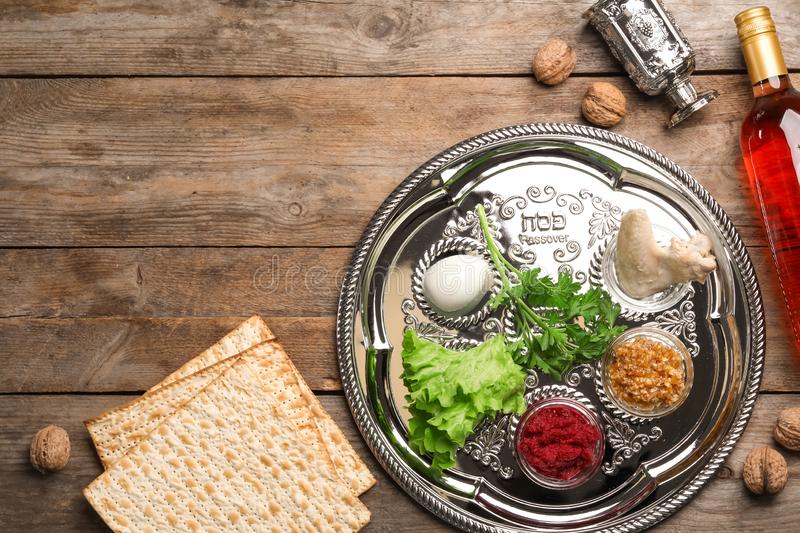
In preparation for the holiday, Jews are commanded to rid their homes of leavened foods-including breads, rolls, bagels, cereals, pastas etc. It is traditional to donate unopened boxes of these foods to those who are hungry. Our congregation hosts a food drive every year collecting for area food banks.
Each year, all over the world, Passover is recalled with the ritual meal where participants of all ages read from a Haggadah. The Hagaddah (Order of the Passover Seder) tells the story of our freedom. The Haggadah tells about how the Jewish people were slaves and then became free. We may use different Haggadahs. Some may have finger puppets and guitars around the table, and some may use Haggadahs that came with Maxwell House Coffee forty years ago. Some read from new Women’s Hagaddahs and some from 21st century updated inclusive Haggadahs with new language and ideas. And some write their own that are just right for those coming to their Seders. Whatever Hagaddah is used, the basic story and many songs and prayers remain the same. The Hagaddah, the story of Passover is our script. We learn the customs, taste the foods, and retell the moments of this dramatic story that concludes in celebration after crossing through the Red Sea.
We begin the Seder by singing about how good and pleasant it is to dwell together. This year same as last year, many of us will still be getting together over Zoom with family and friends and will be calling these gatherings Z’eders as we are still socially distancing due to the COVID pandemic.
We continue, lighting the festival candles with a special blessing-praising God, the candles remind us we must help and not hurt, cause joy and not sorrow, create and not destroy, and help all to be free. We praise God for the gift of Life.
Many Seder meals begin with Matzo Ball Soup, Gefilte Fish, a Hard-Boiled Egg in Salt Water (to remember the tears that were shed, and the egg to signify new beginnings, before the actual meal begins.
A Seder Plate in the center of the table includes ritual symbols of the holiday. These include a roasted lamb shank bone representing the Pesach sacrifice at the Temple in Jerusalem, recalling the ancient sacrifice of a paschal lamb in the Temple, bitter herbs/horseradish representing the bitterness of slavery, a roasted egg -symbolizing part of the sacrifice in the Temple in Jerusalem, charoset (apples nuts, cinnamon, honey and wine mixture)- representing the mortar and brick used by the slaves, Parsley- representing hope and renewal- this is dipped into saltwater to represent tears, again a symbolic reminder of the pain felt by the Israelites when they were enslaved. Unleavened bread called matzo is served in lieu of bread or rolls, honoring the bread that the Israelites took with them when they left slavery so quickly that it didn’t have time to rise.
We are commanded to eat matzo in lieu of leavened breads, bagels, muffins, rolls, pasta, etc. for the entire eight days of Passover. There are lots of fun recipes to make meals and snacks including chocolate dipped matzo, caramel toffee matzo, matzo pizza, matzo lasagna etc. The “middle matzo” on the table is usually hidden during the meal, for the children to find after the meal. It’s called the Afikomen. Whoever finds it, gets a prize!
- That God will Free us from the burdens of slavery.
- Deliver us from bondage.
- Redeem us with an outstretched arm.
- And Take us as God’s people.
Two thirds of the story of Passover is shared before the meal is served, with the remainder following the meal and closing with songs and laughter.
If the meal is to be “Kosher for Passover style” it is usually an all dairy, or all meat, meal. Regardless of whether the hosts keep kosher otherwise, meat and dairy are traditionally not offered during the same meal.
Traditionally, the first night Seder is celebrated in one’s home, and the second night Seder is more of a community Seder either at a synagogue, community center, or other larger gathering place. Again, our second night Seder will be online this year.
It is traditional to open one’s home up to those who have never been to a Seder, or have nowhere else to go for Seder, if you have room at your table.
Our temple (or Synagogue) is offering several activities during this eight-night holiday, including services, cooking classes, craft projects, a concert and weekday daily programing by our clergy.
For more information, please see our website www.templerodefshalom.org
Our Temple Rodef Shalom community wishes all who celebrate a “Zissen Pesach” (Joyful and Sweet Passover) and hope that this explanation is helpful to those who are not familiar with this holiday.

Tysons Interfaith Announces New Website
(Tysons, Virginia, March 23, 2021) Today, Tysons Interfaith announced the launch of its new website: https://tysonsinterfaith.org/
“We are very excited to launch this new platform as a community service for people who live and work in the Tysons area,” said Bill Larson, President of the organization. “The website features opportunities for worship, volunteerism, and assistance resources. It also features a blog, advocacy, and educational materials we hope will foster constructive community dialogue and advance the principles of diversity, mutual respect, compassion, and ethical engagement. The site also has a downloadable map, created in conjunction with Fairfax County, to help people find local houses of worship, parks, and other community resources.”
The Fairfax County Comprehensive Plan envisions Tysons as an urban center of 100,000 residents and 200,000 jobs by the year 2050. Said Larson, “We believe that those who live, work, and play in Tysons will enjoy higher quality of life through the public services, spiritual growth, and community service opportunities available to them through the diverse faith traditions and houses of worship surrounding Tysons. Since there is currently no physical space available for worship or spiritual practice in Tysons, Tysons Interfaith is creating a virtual space where people can learn of public services available, plug in to their personal faith tradition, or explore options for their own spiritual growth or public service.”
Larson continued, “By working together, we have learned that people of different faith practices and spiritual traditions share many values and enjoy working together to better our community. We invite congregations, groups, and individuals to join in this unique opportunity to build a vibrant, Tysons community that is welcoming for all.”
Tysons Interfaith, a 501(c)(3) Corporation, was founded in 2013 to promote interfaith understanding, spiritual growth, and human connection in the rapidly growing community of Tysons, Virginia. For further information, please email info@tysonsinterfaith.org or call 703-244-3252.
.
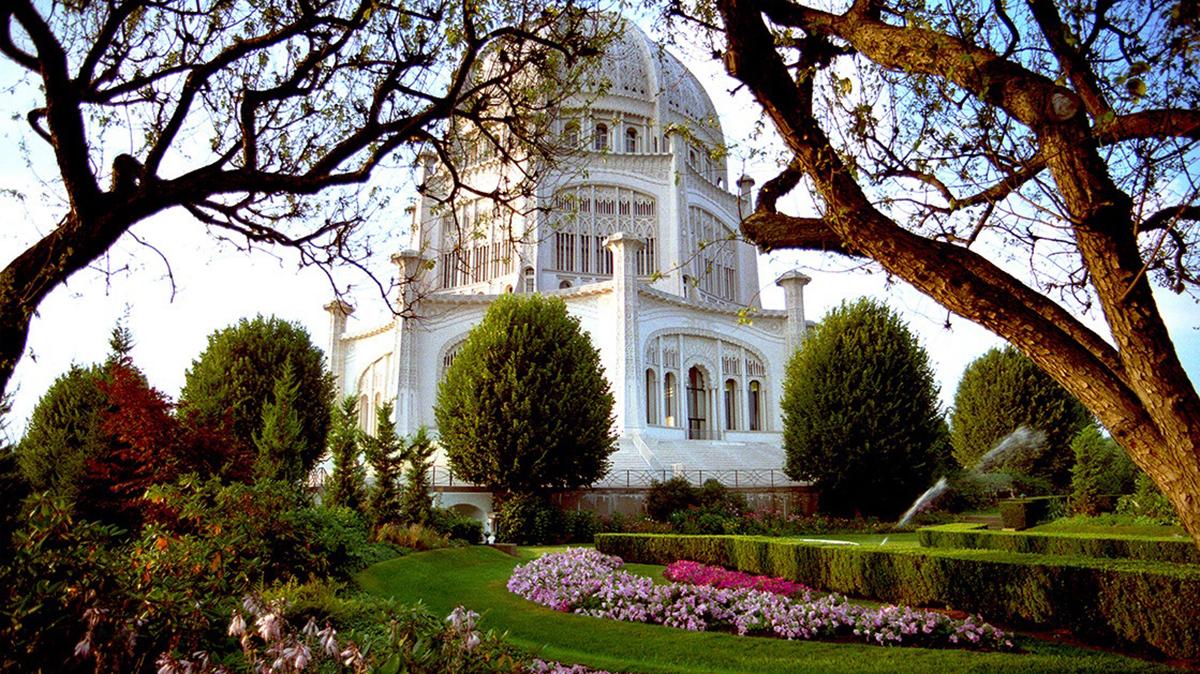
Probably many people know that Easter and Passover occur in the spring, but spring is also a time of sacred observation for people of the Baha’i Faith.
March 20- 21 are the Baha’i Holy Days of Naw-Ruz, the Baha’i New Year. Naw-Ruz coincides with the spring equinox and is an ancient Persian festival celebrating the “new day.” For Baha’is it marks the end of the annual nineteen-day fast and is one of the nine holy days of the year when work is suspended, and children are exempted from attending school.
Also in the spring is the Festival of Ridvan. This annual Baha’i festival commemorates the twelve days when Baha’u’llah, the founder of the Baha’i Faith, publicly proclaimed His mission as God’s messenger for this age. Elections for local, national, and international Baha’i institutions are generally held during the Festival of Ridvan. The first day (April 20 or 21), the ninth day (April 28 or 28), and the twelfth day (May 1 or 2) are celebrated as holy days when work is suspended, and children are exempted from attending school.
To learn more about the Baha’i Faith, please visit: https://www.bahai.org/
This blog post is the expressed opinion of its writer and does not necessarily reflect the views of Tysons Interfaith or its members.
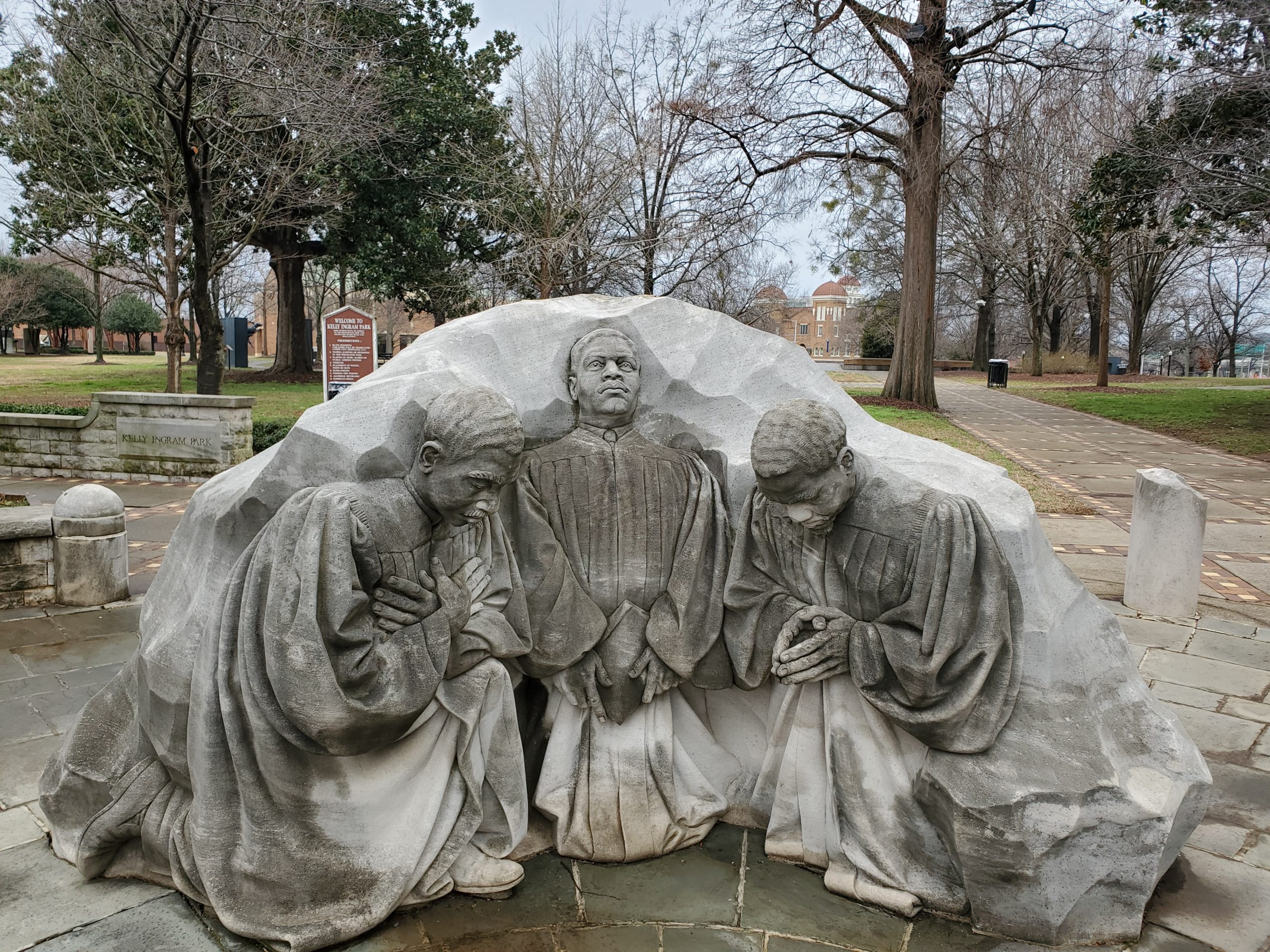
This past Sunday, March 7, was the 56th anniversary of Bloody Sunday in Selma, Alabama, where hundreds of people marching for voting rights for African Americans, including John Lewis, were attacked and beaten by the local sheriff and numerous others after crossing the Edmund Pettus Bridge. About a week before that, on a tour of civil rights sites in the South, we walked across the bridge, which was a very moving experience as we contemplated what had happened there fifty-six years earlier.
One thing that impressed us as we toured several sites in Alabama and Georgia is the involvement of so many people of faith in the civil rights movement. While some of them, such as Martin Luther King Jr. and Ralph Abernathy, are well known, some quiet heroes are not so well known. The incident that triggered the march on Bloody Sunday was the killing of Jimmy Lee Jackson, pictured below, who was shot by a state trooper as he participated in a nonviolent march for voting rights in Marion, AL, not far from Selma. Jackson, a twenty-six-year-old Vietnam war veteran and young father, had recently become the youngest deacon in his Baptist Church, see, https://www.biography.com/activist/jimmie-lee-jackson.
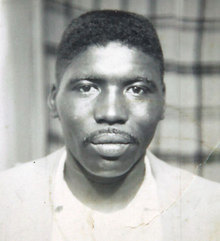
Shortly after Bloody Sunday, Martin Luther King Jr. invited people of faith and others to come to Selma to support a march to Montgomery in support of voting rights. James Reeb, a white Unitarian Universalist minister from Boston, responded to the call. On the evening of March 9, 1965, walking back to his hotel from dinner with two other ministers, he and the others were badly beaten by four white supremacists, and Reeb died shortly thereafter in a Birmingham hospital, leaving a wife and two young children. A powerful NPR podcast goes into Reeb’s death and the situation in Selma in riveting detail, https://www.npr.org/podcasts/510343/white-lies.
In Birmingham, the local leader of the movement was Rev. Fred Shuttlesworth, pastor of the Bethel Baptist Church, https://en.wikipedia.org/wiki/Fred_Shuttlesworth. He participated in lunch counter sit-ins, supported the Freedom Riders, and in 1957 was beaten badly when he attempted to enroll his children in an all-white school. He was described this way by one of the organizers of the later Freedom rides: “Fred was practically a legend. I think it was important – for me, definitely, and for a city of people who were carrying on a movement – for there to be somebody that really represented strength, and that’s certainly what Fred did. He would not back down, and you could count on it. He would not sell out, [and] you could count on that.”
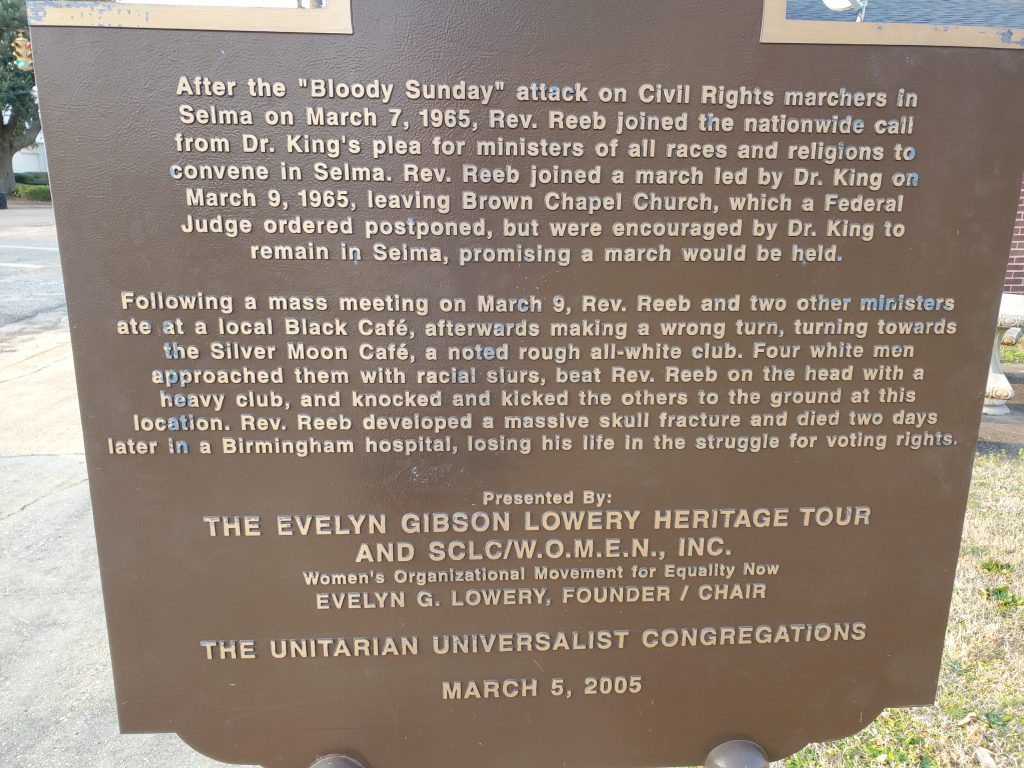
The Birmingham Airport has been renamed to honor Shuttlesworth. Also, in Kelly Ingram Park in Birmingham, where many of the famous marches occurred, there is a monument to honor ministers who supported the marches, and also a lovely monument to the four girls that were killed in the bombing of the 16th Street Baptist Church in 1965 (located across the street from the church).
